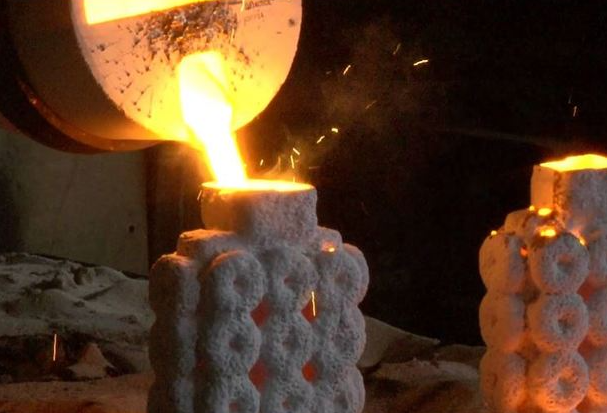In the realm of metal casting, advancements in technology have led to the development of innovative processes that offer increased precision, improved surface finish, and enhanced manufacturing capabilities. One such method is vacuum die casting, which combines the benefits of die casting with the advantages of a vacuum environment. This article explores the vacuum die casting process and its application in manufacturing a 0.6 mm-thick aluminum plate with four maze shapes, emphasizing the role of simulation in optimizing the production. Vacuum die casting is a variant of traditional die casting that involves the use of a vacuum chamber during the casting process. In conventional die casting, the molten metal is injected into the die cavity under pressure. However, in vacuum die casting, a vacuum is created in the die cavity before the metal is introduced. This vacuum environment helps eliminate gas porosity, reduce oxidation, and enhance the overall quality of the cast part.

Benefits of Vacuum Die Casting
- The integration of vacuum technology into the die casting process brings several advantages:
a. Improved Quality: The absence of air and gas in the die cavity minimizes the formation of porosity and voids, resulting in castings with higher structural integrity and improved mechanical properties.
b. Enhanced Surface Finish: The vacuum environment reduces the formation of oxides and impurities on the surface of the cast part, leading to smoother and more aesthetically appealing finishes.
c. Reduced Scrap Rate: The elimination of gas porosity and improved overall quality reduces the scrap rate, resulting in cost savings and higher production efficiency.
d. Thin-Wall Capability: Vacuum die casting enables the production of thin-walled components with intricate shapes and fine features, making it suitable for applications that require lightweight structures and complex geometries.
- Simulation in Vacuum Die Casting: Simulation plays a vital role in optimizing the vacuum die casting process, especially when dealing with delicate structures like a 0.6 mm-thick aluminum plate with four maze shapes. By utilizing advanced software tools, engineers can simulate and analyze the entire casting process to ensure the best possible outcomes.
- Here’s how simulation aids in the manufacturing of such components:
a. Mold Design Optimization: Simulation allows engineers to evaluate different mold designs, including the gating system, runner design, and venting arrangements. By analyzing the flow of molten metal and the filling pattern, engineers can identify potential issues, such as air entrapment or incomplete filling, and make necessary adjustments to optimize the mold design.
b. Predicting and Eliminating Defects: Simulation software enables the prediction and visualization of potential defects, such as shrinkage porosity, air pockets, or cold shuts. By simulating the solidification process, engineers can identify critical areas prone to defects and modify the casting parameters, such as mold temperature or cooling rate, to eliminate or minimize these issues.
c. Optimal Process Parameters: Simulation allows for the optimization of process parameters, such as injection speed, pressure, and die temperature, to achieve the desired filling and solidification characteristics. By simulating different scenarios, engineers can fine-tune the process to ensure a successful casting with minimal defects.
d. Performance Analysis: Simulation provides valuable insights into the mechanical behavior and performance of the cast component. Engineers can evaluate factors like stress distribution, deformation, and potential failure points, enabling them to make informed decisions and ensure the structural integrity of the final product.
- Advancements in Vacuum Die Casting: Vacuum die casting has witnessed significant advancements in recent years, driven by ongoing research and development efforts. These advancements aim to further enhance the capabilities and efficiency of the process. Some notable developments include:
a. Advanced Vacuum Systems: Improved vacuum systems with enhanced degassing capabilities help achieve a
higher level of gas removal from the die cavity, resulting in even lower gas porosity and improved casting quality.
b. Alloy Optimization: Research is focused on developing aluminum alloys specifically designed for vacuum die casting applications. These alloys exhibit superior fluidity, reduced oxide formation, and enhanced mechanical properties, further improving the overall performance of vacuum die cast components.
c. Process Monitoring and Control: Advanced sensors and monitoring systems are being integrated into vacuum die casting machines to provide real-time data on temperature, pressure, and fill conditions. This data allows for better process control, optimization, and early detection of any deviations or anomalies.
d. Additive Manufacturing Integration: The combination of vacuum die casting with additive manufacturing techniques, such as 3D printing, opens up new possibilities for creating complex internal geometries and intricate structures. This integration allows for the production of components with integrated cooling channels, lightweight designs, and customized features.
- Application in Manufacturing 0.6 mm-Thick Aluminum Plate with Four Maze Shapes
- The vacuum die casting process, along with simulation, proves to be highly suitable for manufacturing a 0.6 mm-thick aluminum plate with four maze shapes. The thin-wall capability of vacuum die casting ensures the precise replication of intricate maze patterns, while the vacuum environment eliminates porosity and ensures high-quality castings. Simulation aids in optimizing the mold design, identifying potential defects, and determining the optimal process parameters for achieving the desired results.
By utilizing vacuum die casting and simulation, manufacturers can produce these delicate components with minimal defects, excellent surface finish, and high dimensional accuracy. The resulting aluminum plate with four maze shapes can find applications in various industries, including electronics, automotive, and aerospace, where lightweight and intricately designed components are in demand.

